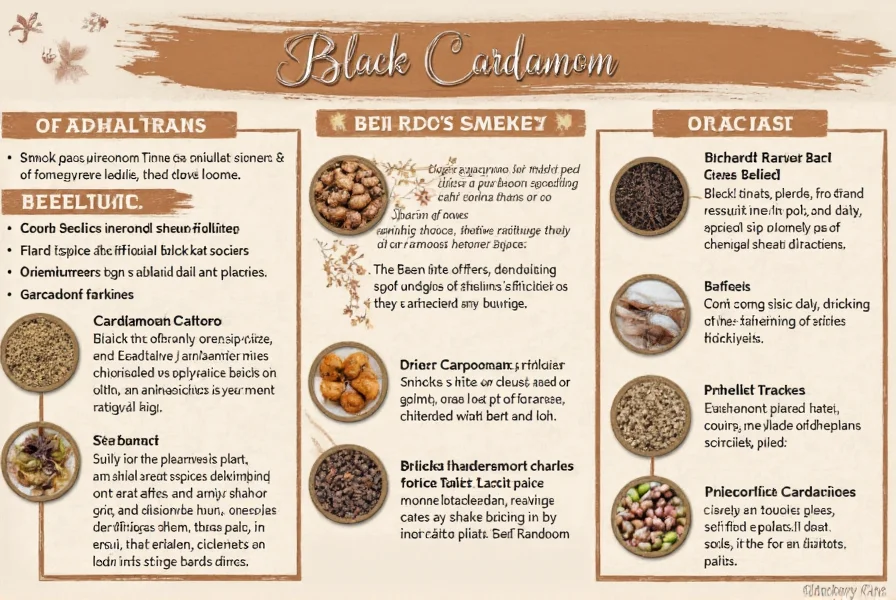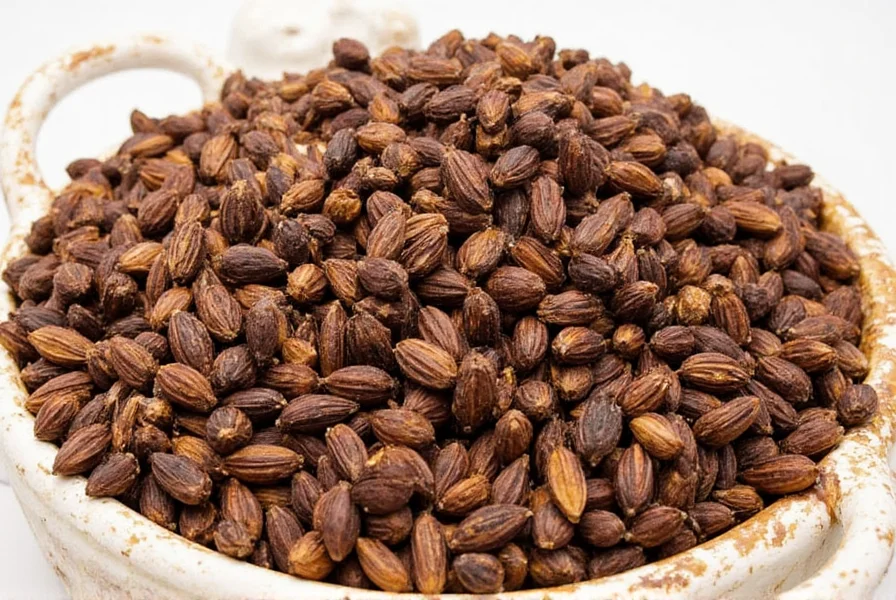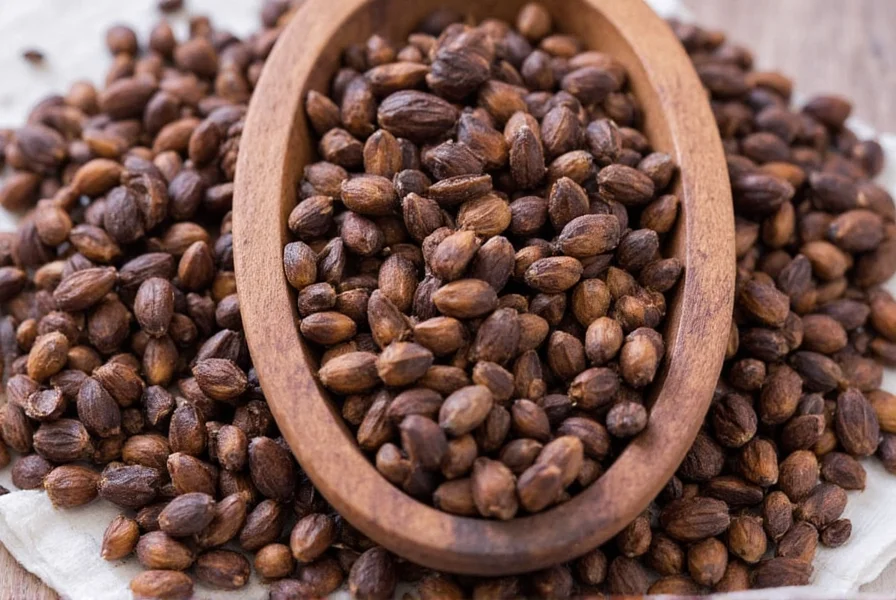When you reach for black cardamom in your spice cabinet, you're accessing one of the most distinctive ingredients in global cuisine. Unlike its sweeter green counterpart, black cardamom pods develop their signature smoky character through open-flame drying, creating complex notes of menthol, camphor, and earthy warmth that transform savory dishes. This ancient spice has been used for centuries across South and East Asia, not just for flavor but also in traditional medicine practices.
What Exactly Is Black Cardamom?
Botanically classified as Amomum subulatum (or sometimes Amomum costatum), black cardamom belongs to a different genus than the more familiar green cardamom (Elettaria cardamomum). Grown primarily in Nepal, Bhutan, India's Sikkim region, and parts of China, these larger, darker pods come from a perennial herb that thrives in cool, high-altitude forests.
The distinctive smoky flavor isn't natural to the plant itself—it develops during processing. After harvest, farmers dry the pods over open fires using local woods, which imparts that characteristic campfire-like aroma. This traditional drying method creates a spice with remarkable complexity that green cardamom simply cannot replicate.

Black Cardamom vs Green Cardamom: Key Differences
Understanding the contrast between these two spices prevents culinary mishaps. While both belong to the ginger family (Zingiberaceae), they're as different as cinnamon and cassia:
| Characteristic | Black Cardamom | Green Cardamom |
|---|---|---|
| Botanical Name | Amomum subulatum | Elettaria cardamomum |
| Appearance | Large, dark brown/black, rough pods | Small, light green, smooth pods |
| Flavor Profile | Smoky, camphorous, earthy, with menthol notes | Sweet, floral, citrusy, eucalyptus-like |
| Primary Culinary Use | Savory dishes, slow-cooked meats, stews | Baking, desserts, chai, some savory dishes |
| Drying Process | Open-fire dried (creates smokiness) | Air-dried or steam-treated |
Unlocking Black Cardamom's Culinary Potential
The secret to using black cardamom effectively lies in understanding its powerful flavor. Unlike green cardamom, which works well in both sweet and savory applications, black cardamom's intense smokiness makes it almost exclusively a savory ingredient. Professional chefs recommend these techniques:
- Whole pod usage: Add 1-2 whole pods to rice dishes like biryani or pulao during cooking, then remove before serving
- Tempering technique: Heat pods in oil at the beginning of cooking to release flavors into the fat base
- Stock enhancement: Include in bone broths or meat stocks for deep, complex background notes
- Spice blends: Essential component in some garam masala variations, particularly those from Northern India
When substituting black for green cardamom (or vice versa), remember they're not interchangeable in equal amounts. Black cardamom's stronger flavor means you typically use about half the quantity. For example, if a recipe calls for 4 green cardamom pods, use just 2 black pods.
Proper Storage for Maximum Flavor Retention
Like all spices, black cardamom loses potency over time. To preserve its distinctive smoky aroma:
- Store whole pods in an airtight container away from light and heat
- Keep away from strong-smelling spices that might transfer odors
- Grind only what you need immediately before use (pre-ground loses flavor rapidly)
- Check freshness by crushing a pod—fresh black cardamom releases intense smoky, pine-like aromas
Properly stored, whole black cardamom pods maintain peak flavor for 12-18 months. Ground spice loses most of its volatile compounds within 3-6 months, so buying whole and grinding as needed delivers dramatically better results.

When Black Cardamom Shines: Signature Dishes
Certain recipes showcase black cardamom's unique qualities better than others. Look for it in:
- Kashmiri Rogan Josh: The smoky depth complements lamb beautifully
- Tibetan Thukpa: Adds complexity to noodle soup broths
- Chinese Five-Spice Powder variations: Some regional blends include it
- Biryani from North India: Provides earthy contrast to saffron and rose water
- Slow-cooked bean dishes: Enhances earthiness without overpowering
Chefs note that black cardamom works best in dishes with longer cooking times, where its robust flavor can mellow and integrate rather than dominate. It's particularly effective with fatty meats, legumes, and hearty vegetables that can stand up to its intensity.
Common Substitutes When Black Cardamom Isn't Available
While nothing perfectly replicates black cardamom's unique profile, these alternatives work in a pinch:
- Smoked paprika + regular cardamom: 1/4 tsp smoked paprika with 2 green cardamom pods
- Lapsang souchong tea + cardamom: Steep 1/2 tsp tea in cooking liquid
- Chipotle powder + allspice: Tiny pinch (1/8 tsp) per serving
Remember that substitutes never match the original's complexity. For authentic regional dishes, seeking out genuine black cardamom proves worth the effort. Specialty Indian or Tibetan markets typically carry it, as do many online spice retailers focusing on premium ingredients.
Frequently Asked Questions About Black Cardamom
Can I use black cardamom in baking like green cardamom?
No, black cardamom's intense smoky flavor doesn't work well in sweet applications. Its camphorous notes clash with desserts and baked goods. Reserve black cardamom for savory dishes, while using green cardamom for baking, chai, and sweet preparations where its floral, citrus notes shine.
Why does my black cardamom taste burnt?
Black cardamom naturally has smoky notes from its traditional open-fire drying process, but shouldn't taste acrid or burnt. This usually indicates poor quality or overuse. Check that you're using the correct amount (typically half what you'd use of green cardamom), and purchase from reputable spice vendors who specialize in fresh, high-quality cardamom.
How do I remove the seeds from black cardamom pods?
Unlike green cardamom, black cardamom pods are too tough to open easily. Professional chefs typically use the whole pod during cooking and remove it before serving. If you need the seeds, crack the pod with the back of a knife, then scrape out the small black seeds. Many find it more practical to toast whole pods in dry pan before grinding everything together for spice blends.
Is black cardamom the same as brown cardamom?
Yes, black cardamom (Amomum subulatum) is sometimes called brown cardamom in certain regions, though this can cause confusion. True black cardamom comes from the eastern Himalayas and has a distinct smoky flavor. Some products labeled "brown cardamom" may actually be lower-quality green cardamom that's been improperly stored or processed.











 浙公网安备
33010002000092号
浙公网安备
33010002000092号 浙B2-20120091-4
浙B2-20120091-4